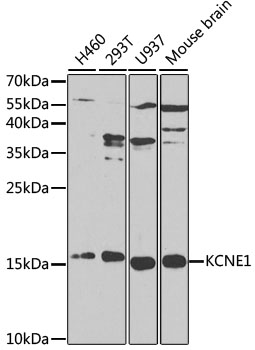Voltage-gated potassium channels play a variety of important roles in human health and disease (1,2). KCNE1, also known as MinK, belongs to a family of small transmembrane proteins (KCNE1, 2, 3, 4, and KCNE1L) that modulate the activity of several voltage-gated K+ channels (3-5). KCNE1 functions as the modulatory β-subunit of the pore-forming α-subunit KCNQ1, and alters several biophysical properties of KCNQ1 channels (6,7). Research studies have shown that several inherited mutations in KCNE1 result in long QT syndrome (8-10) and deafness (11).

